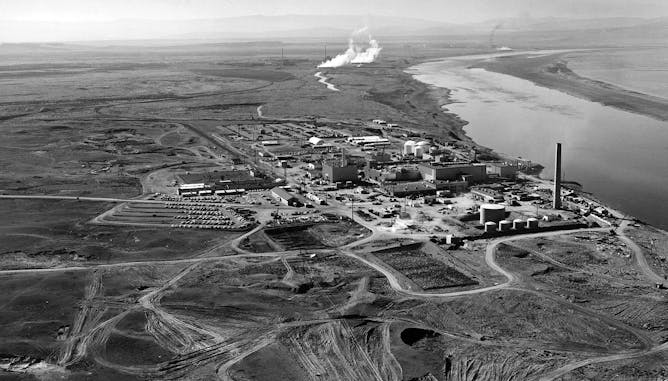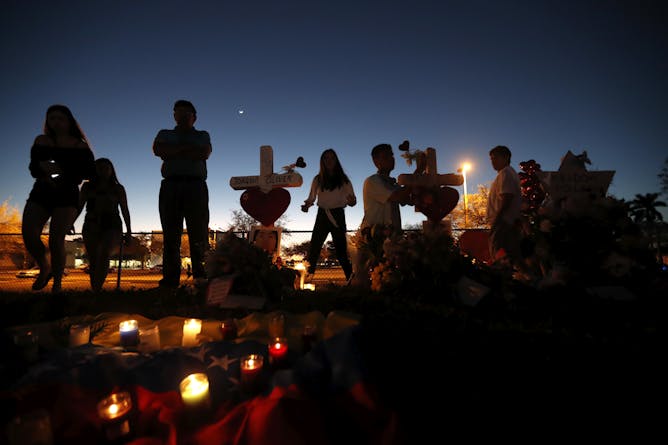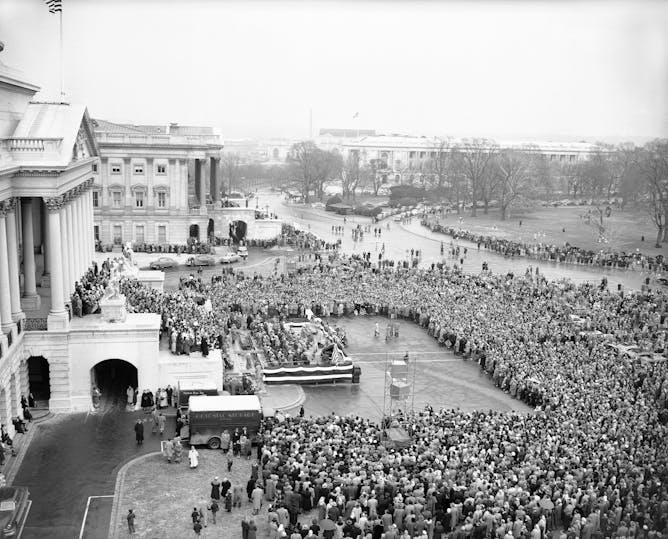Editor's note
|
|
The Trump administration is proposing to develop new nuclear weapons to deter adversaries such as Russia, China and North Korea. Few Americans are aware, however, that the federal government is still cleaning up some of our nation’s Cold War atomic bomb production sites. NC State professor William Kinsella, who has advised cleanup work at the massive Hanford site in Washington state, explains how secrecy and weak oversight created a multibillion-dollar toxic mess there.
Part of the public debate in the aftermath of the Parkland school shooting has focused on teenagers’ maturity and how old one should be to buy a gun. The law currently grants Americans different rights as they reach different ages. Psychologist Laurence Steinberg writes that research on adolescents suggests that some of these legal age boundaries should be raised, while others should be lowered.
After the funeral this Friday of the man known by many as “America’s pastor,” Amherst College’s Andrew Dole asks: could there be another Billy Graham?
And, Filippo Trevisan of American University explains why the European Union took a hit in yesterday’s Italian election.
|
Jennifer Weeks
Environment + Energy Editor
|

|
|
Top stories
|

Nuclear reactors line the bank of the Columbia River at the Hanford site in 1960.
USDOE
William J. Kinsella, North Carolina State University
During the Cold War, the US built nuclear weapons at a network of secretive sites across the nation. Some are still heavily polluted and threaten public health today.
|

Vietnam War protests led to a lower voting age. The Parkland shooting could push similar reevaluations.
AP Photo/Gerald Herbert
Laurence Steinberg, Temple University
Teens' brains develop different skills along a predictable timeline. These milestones should influence the legal age boundaries for voting, buying guns and being put to death.
|

Several thousand people gather at a rally in Washington in 1952 to hear Evangelist Billy Graham preach.
AP Photo
Andrew Dole, Amherst College
Current trends suggest that evangelicalism is out of step with younger Americans. But, a scholar says, evangelicalism has been here before.
|
|
|
Politics + Society
|
-
Filippo Trevisan, American University
Together, two parties with a tough stance on immigration and the EU – the Five Star Movement and the League – received nearly 50 percent of the vote.
-
Lou Galambos, Johns Hopkins University
The current period of partisan division in the US isn't unique. We can learn from past President Dwight Eisenhower on how to leave bitterness behind and get back to what he called the "Middle Way."
|
|
|
|
Health + Medicine
|
-
Simon F. Haeder, West Virginia University; Valarie Blake, West Virginia University
The Affordable Care Act has been under siege since it became law eight years ago. What impact will the latest lawsuit against it have?
-
Gerardo Chowell-Puente, Georgia State University; Cecile Viboud, National Institutes of Health; Lone Simonsen, Roskilde University
One hundred years after a strange and devastating pandemic, researchers comb for clues in dusty libraries, church records and long- forgotten books.
|
|
|
|
Trending on site
|
-
Timothy J. Jorgensen, Georgetown University
Feb. 28 marks the 75th anniversary of Operation Gunnerside. A stealthy group of skiing commandos took out a crucial Nazi facility and stopped Hitler from getting the atomic bomb.
-
Jeff Daniels, West Virginia University
As the nation searches for ways to prevent the next school shooting, one scholar says answers can be found in a forgotten study the Secret Service did after the Columbine massacre.
-
Matthew D. Johnson, Binghamton University, State University of New York
It's a classic adage for those seeking love. The problem is that psychology research shows it's just not true.
|
|
|
|
| |
| |
|
|